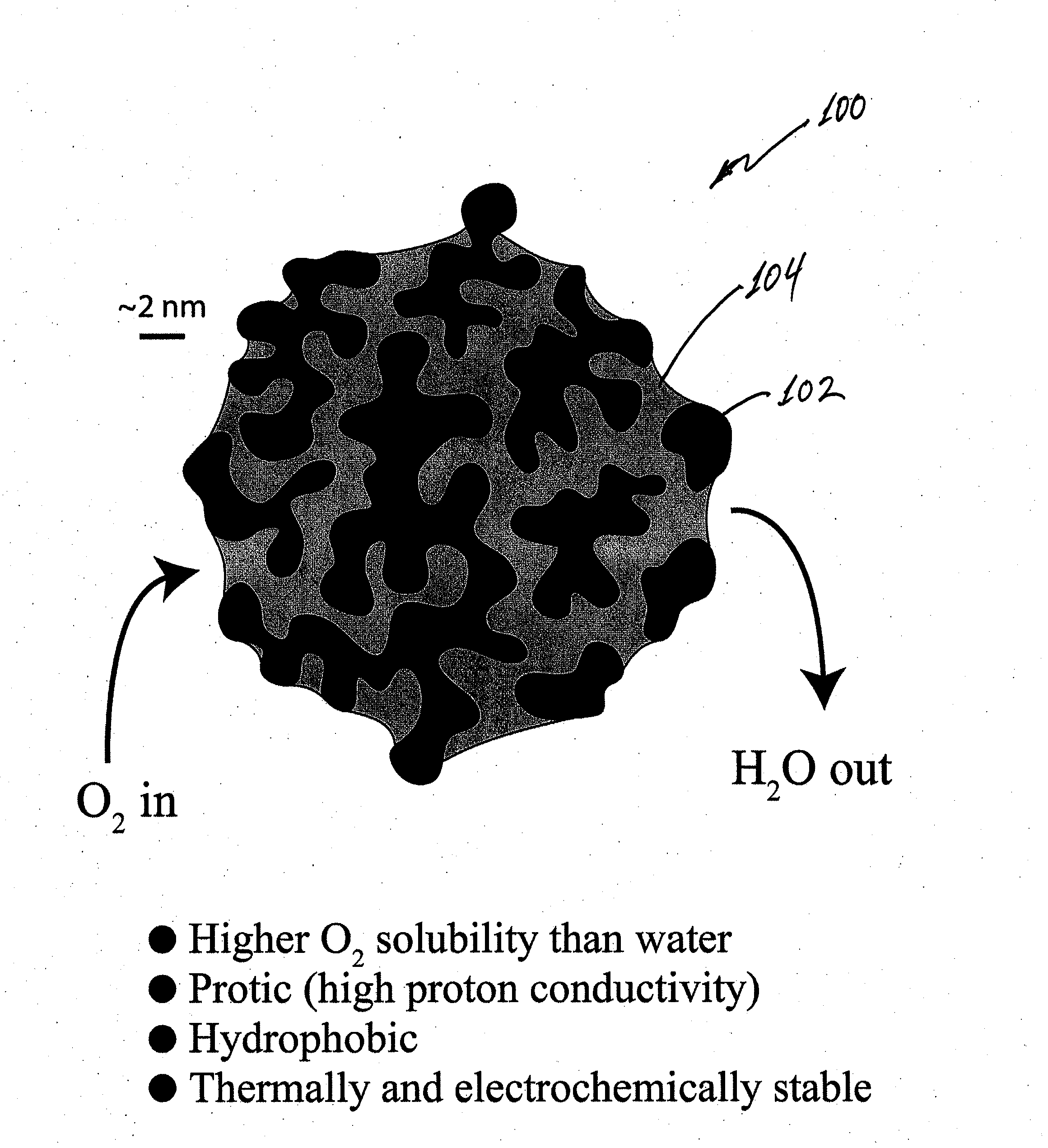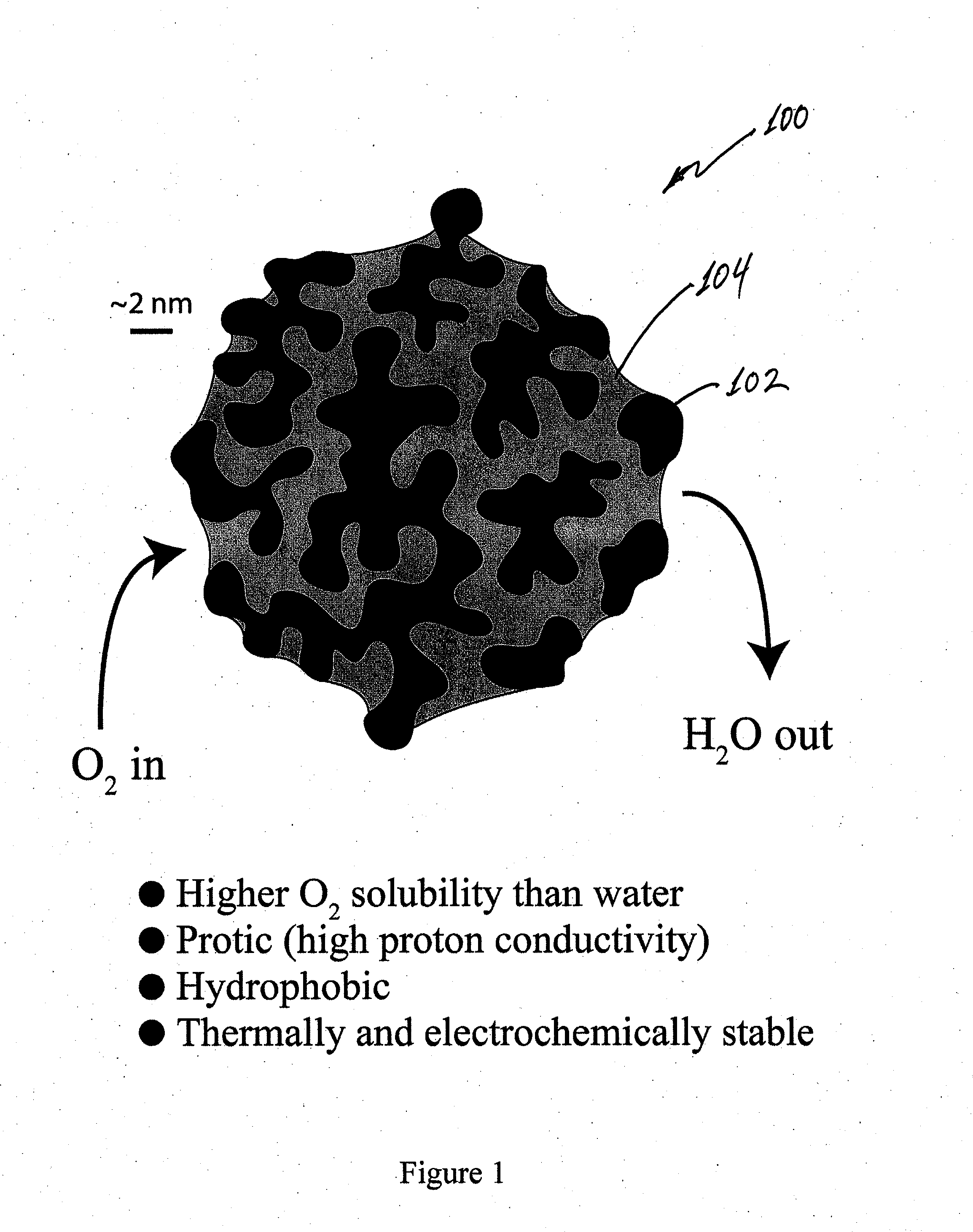Composite porous catalysts
a porous catalyst and composite technology, applied in the field of composite catalysts, can solve the problems of many limitations inherent in this type of electrode architecture, and many particles may not be in good electrical contact with the external circuit, so as to enhance the attraction, enhance the expulsion of reaction products, and enhance the effect of attraction
- Summary
- Abstract
- Description
- Claims
- Application Information
AI Technical Summary
Benefits of technology
Problems solved by technology
Method used
Image
Examples
examples
[0049]The improvement of catalysts for the 4-electron oxygen reduction reaction (ORR; O2+4H++4e−→2H2O) remains a critical challenge for fuel cells and other electrochemical energy technologies. Recent attention in this area has centered on the development of metal alloys with nanostructured compositional gradients (e.g., core / shell structure) that exhibit higher activity than supported Pt nanoparticles (Pt / C). For some examples, see the following:[0050]Greeley, J., Stephens, I., Bondarenko, A., Johansson, T., Hansen, H., Jaramillo, T., Rossmeisl, J., Chorkendorff, I., Nørskov, J. Alloys of platinum and early transition metals as oxygen reduction electrocatalysts. Nature Chemistry 1, 552-556 (2009).[0051]Paulus, U., Wokaun, A., Scherer, G., Schmidt, T., Stamenkovic, V., Markovic, N., Ross, P. Oxygen reduction on high surface area Pt-based alloy catalysts in comparison to well defined smooth bulk alloy electrodes. Electrochim. Acta 47, 3787-3798 (2002).[0052]Stamenkovic, V., Mun, B., ...
PUM
| Property | Measurement | Unit |
|---|---|---|
| specific surface area | aaaaa | aaaaa |
| specific surface area | aaaaa | aaaaa |
| specific surface area | aaaaa | aaaaa |
Abstract
Description
Claims
Application Information
 Login to View More
Login to View More - R&D
- Intellectual Property
- Life Sciences
- Materials
- Tech Scout
- Unparalleled Data Quality
- Higher Quality Content
- 60% Fewer Hallucinations
Browse by: Latest US Patents, China's latest patents, Technical Efficacy Thesaurus, Application Domain, Technology Topic, Popular Technical Reports.
© 2025 PatSnap. All rights reserved.Legal|Privacy policy|Modern Slavery Act Transparency Statement|Sitemap|About US| Contact US: help@patsnap.com



